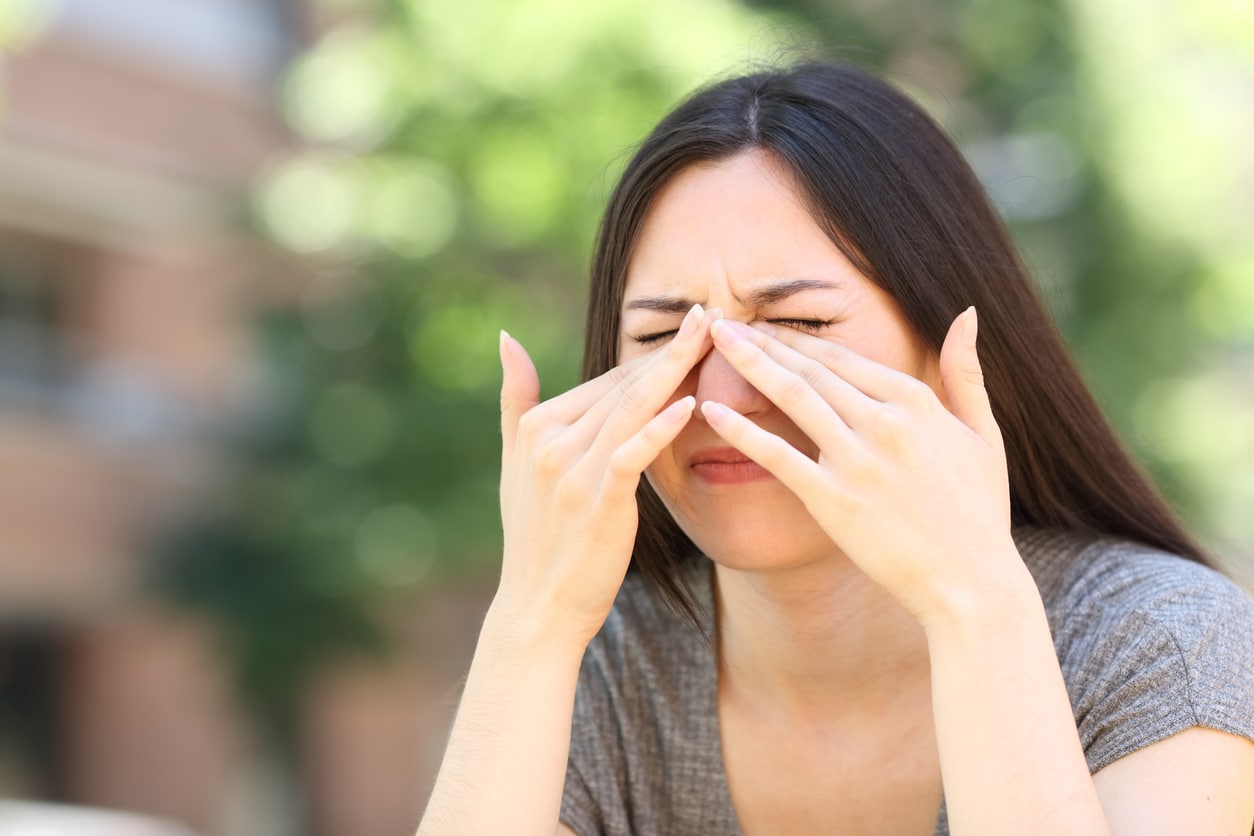When your eyes look red and swollen, you want to know why. There are two common causes: pink eye and allergies. Let’s take a look at both causes and how to tell the difference to get prompt treatment.
Pink Eye

Pink eye, or conjunctivitis, is an inflammation of the membrane covering the white part of your eye, called the conjunctiva. When they get irritated, the small blood vessels in the conjunctiva appear more visible, causing the trademark pink eye look.
Common pink eye symptoms include:
- Red eye
- Swollen eyelids
- Crusting on the eyelids and eyelashes
- White, yellow or green fluid discharge
- Dry, watery, itchy, burning eyes
- Occasional blurred vision and light sensitivity
There are two main types of pink eye:
- Contagious. Contagious pink eye arises after exposure to a virus, bacteria, parasite or fungus. If you develop contagious pink eye, you’ll need to stay home from school or work and wash your pillowcases to avoid spreading the infection.
- Noncontagious. Noncontagious pink eye stems from contact with irritating substances (allergens, smoke, etc.), eye injuries or other health conditions like autoimmune diseases. Because you can’t spread it, you can go to work or school with noncontagious pink eye, but you may not want to if symptoms are severe.
Eye Allergies
Eye allergies, or allergic conjunctivitis, fall under the noncontagious category of pink eye. They stem from contact with allergens like pollen, mold, dust, pet dander, cosmetics (makeup, lotion, etc.) or certain medications.
Eye allergies will present with similar symptoms to pink eye, but may also include sneezing, coughing, congestion, sinus headaches or hives.
What Are My Treatment Options?
Depending on the cause of your contagious pink eye, your provider might prescribe antivirals, antibiotics, antifungals or antiparasitics to clear the underlying infections.
Managing eye allergies involves a few steps, including:
- Avoid the allergen. Do your best to avoid the allergen causing your reaction. For example, if you’re allergic to cosmetics, try switching to hypoallergenic brands. If you’re allergic to pollen, stay out of Corning Preserve on high-pollen days.
- Take allergy medication. Allergy medication provides short-term symptom relief. You can use oral antihistamines or antihistamine eye drops to minimize symptoms.
- Talk to an allergist. Our allergists can help you find the right treatment path to minimize your symptoms. That may include medication and avoidance or long-term solutions like immunotherapy.
There are also a few ways you can relieve eye irritation while you treat the source, including but not limited to:
- Lid scrubs to remove debris from the eyelashes
- Eye washes
- Provider-approved hydrating eyedrops
- Not touching your eyes
- Warm and cool compresses
If you’re dealing with eye irritation but are unsure what’s causing it, contact Albany ENT & Allergy Services today to schedule an appointment with one of our specialists.